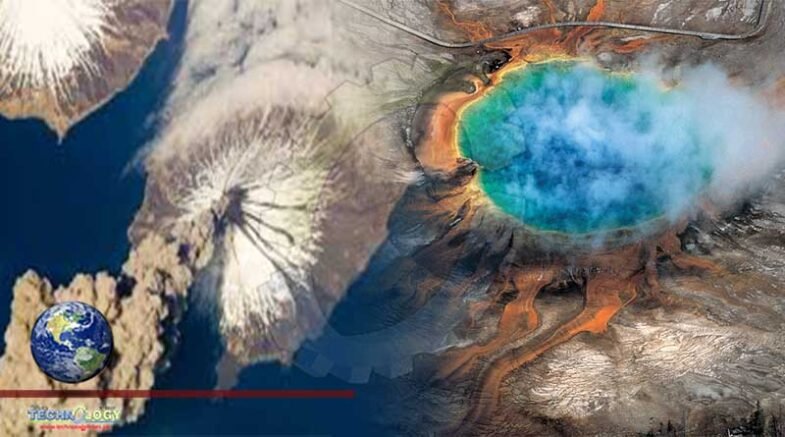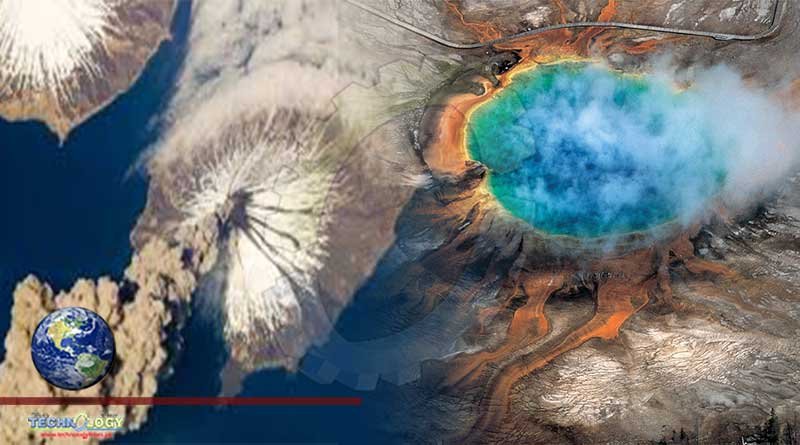Volcanic islands off Alaska may be one giant undiscovered supervolcano, with potentially dramatic and global consequences if it should erupt

Scientists claim they may have found a supervolcano under Alaska which were previously believed to volcanic islands.
Diana Roman, from the Carnegie Institution for Science in Washington DC, along with her colleagues, are set to present their research at the American Geophysical Union meeting.
They analysed geology, structure, seismicity and thermal and gas emissions of Mount Cleveland and five similar-sized volcanoes in the vicinity and suggest something more sinister may be lurking in the waters near Alaska.
According to the report, preliminary data indicates the potential presence of a massive caldera, or collapsed section of the Earths crust with falls into an emptied magma chamber.
This caldera sits underneath the six stratovolcanoes of Carlisle, Cleveland, Herbert, Kagamil, Tana and Uliaga.
This type of collapse can create an effect like a pressure cooker, as the magma chamber refills gradually over time.
“We’ve been scraping under the couch cushions for data,” Roman says.
“But everything we look at lines up with a caldera in this region.”
If the team’s suspicions are proved correct, it would mean that Alaska harbors a ticking volcanic time bomb, similar to Wyoming’s Yellowstone supervolcano.
Alaska’s Aleutian Arc, where the supervolcano is believed to be, is a chain of islands and contains around 80 volcanos. They vary in size and dozens of them have erupted over the years, which mount Cleveland erupting around 20 times over the past 200 years.
If a supervolcanic eruption occurred it’d be an unprecedented event that affected global air travel.
In 1944, an eruption at the mountain was classified as ‘catastrophic’ level three event.
Researchers are aiming to conduct more in-depth analysis of the area, including the seafloor and geological studies, reports RT.
“It does potentially help us understand what makes Cleveland so active,” says lead author John Power, a researcher with the US Geological Survey at the Alaska Volcano Observatory.
“It can also help us understand what type of eruptions to expect in the future and better prepare for their hazards.”
Originally published at Daily Star
